The Constitutional Court of South Africa is on Constitution Hill in Johannesburg. You could walk past it without paying too much attention, scrolling through your Instagram feed and replying to your parents’ frantic WhatsApp messages. You could easily miss the intricate details that make the building one of the most astounding buildings I have ever visited.
Without a tour guide, I might have missed some of the key points and wandered aimlessly around the court without understanding the importance of each carefully chosen piece of architecture. The building in many ways is more restrained rather than opulent, unlike its British and American counterparts. This provides a welcoming atmosphere, a safe haven for the public to feel safe and protected instead of dominating the space and evoking fear. Every aspect of the court’s design had a meaning, and the more I learnt about the message behind each design, the more inquisitive I became. I did not realise that just like data and a story, a space can be deconstructed and have meaning too.
Before even entering the walls, I saw the tangled designs on the Great African Steps, which demonstrate that no path is the same. The journey to apartheid and to South Africa today was different for every person and people will continue to take different paths and routes.
On entering the building, I was surprised. The interior design was modern, and abstract. I was expecting a grand entrance like the Supreme Court in England. Instead, it almost looked like an art gallery. After examining the space, it became clear that the “justice under a tree” concept inspired the design. The silver leaves on the ceiling and the sloping columns as trunks demonstrate the idea that the tree is protecting the people and ensuring justice. The Sloping columns/trunks in the foyer are like trees in an architectural metaphor of traditional African culture, in which elders sit in the shade and young people come to listen to their teachings, and legal disputes are traditionally resolved. The whole space is open with large windows. This is an attempt to show the openness, honesty, and transparency in the constitution. The slits in the ceiling not only provide the people with light and sun, but they also help create shades on the floor.
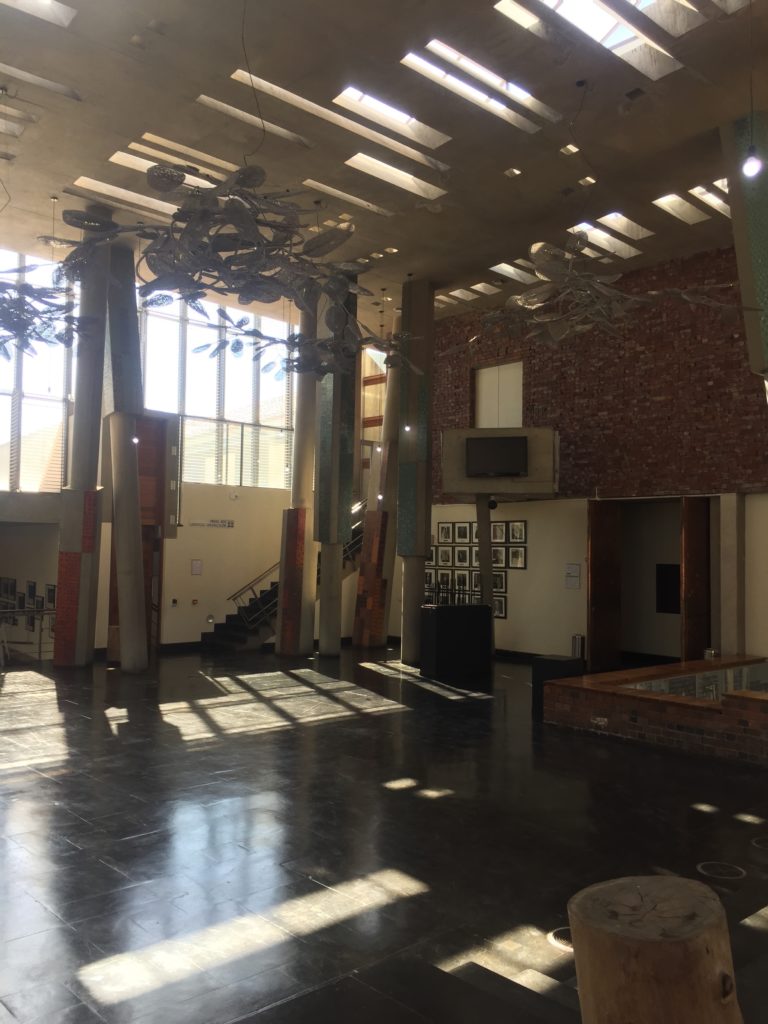
A really interesting section in the right corner of the public area is a giant ladder. It might seem strange at first to have this in the Constitutional Court. However, each piece of the ladder represents the steps that have been taken in South Africa and those that will be taken. The Bars represent the hardship to get to where they are. The Elephant bone represents good memory, and that the country will forgive but never forget the past. The snake represents moving forward but with wisdom. The arrow (not pictured) represents moving forward again, but also remembering. The red sign says “ALUTACONTINUA” which means “The Story continues.”
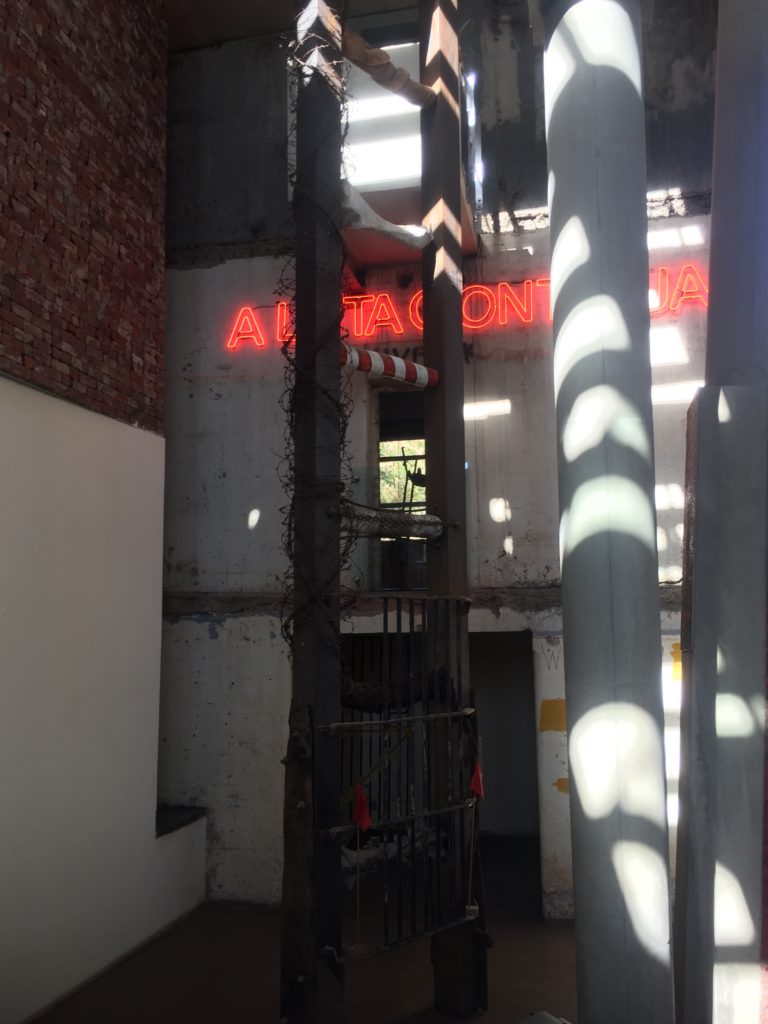
Just before entering the court room, you see the logo for the Constitutional court. It depicts people sheltering under a canopy of branches. It is another representation of the Constitution’s protective role and a reference to a theme that runs though the Court, that of justice under a tree. The logo is not a perfect circle, as it shows that the country is still not perfect. In reality, nobody is perfect, but by acknowledging that, it states a clear intention to improve and progress as a country. In fact, if you put your hand above the trunk, the South African flag is in the logo.

I immediately saw the huge South African flag when I entered the court chamber and the delicate beading. The 11 seats on the judges’ bench has a cow skin cover draped in front of it. Each patch is different, representing the diversity of the judges in race, gender, and ethnicity. Currently the panel has four female judges. The Chief Justice sits in the middle and always mixes up where the other judges sit to create different dynamics. The court meets for four terms a year and each judge has a term of 12-15 years. The ceiling has lights to continue to create shades on the floor in similar style to the public area, and also ensure the public have light on them in the courtroom. The bricks that make the building are from cell blocks from the prison that was on this land and held prisoners such as Nelson Mandela. These bricks were not used to save money. They were used because so many rights were violated in the cells made from these bricks. Reusing them serves as a reminder to ensure rights are protected today so that history does not repeat itself. The judges’ heads align with the feet of the public outside through the window panel. This reminds the judges and court that they are in a position of power to serve the people. The public seating also puts the people in the courtroom at the same height as the judges. The only people above them is the media, which is purely so they can document the entire room. They are not better than them or above them in any way. I noticed a small tree stump stool and enquired why it was there. Our tour guide explained that it can be moved if seats are full for the public to sit on. She called it “Justice on the tree.”
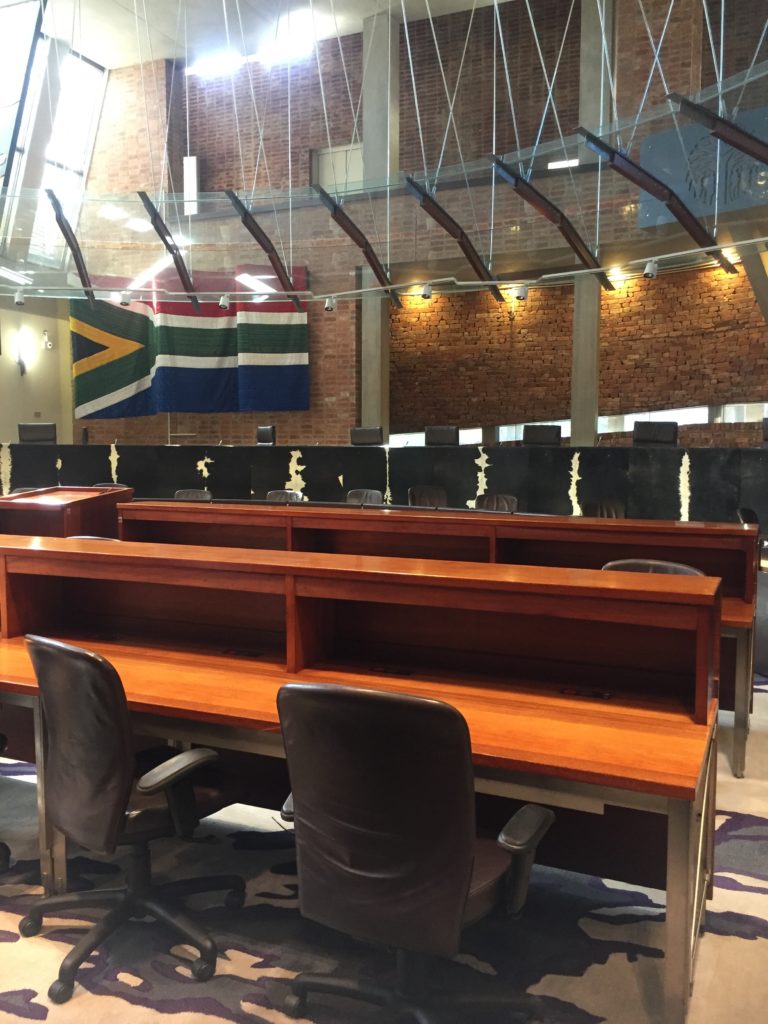
A view from the public seating area of the judges bench 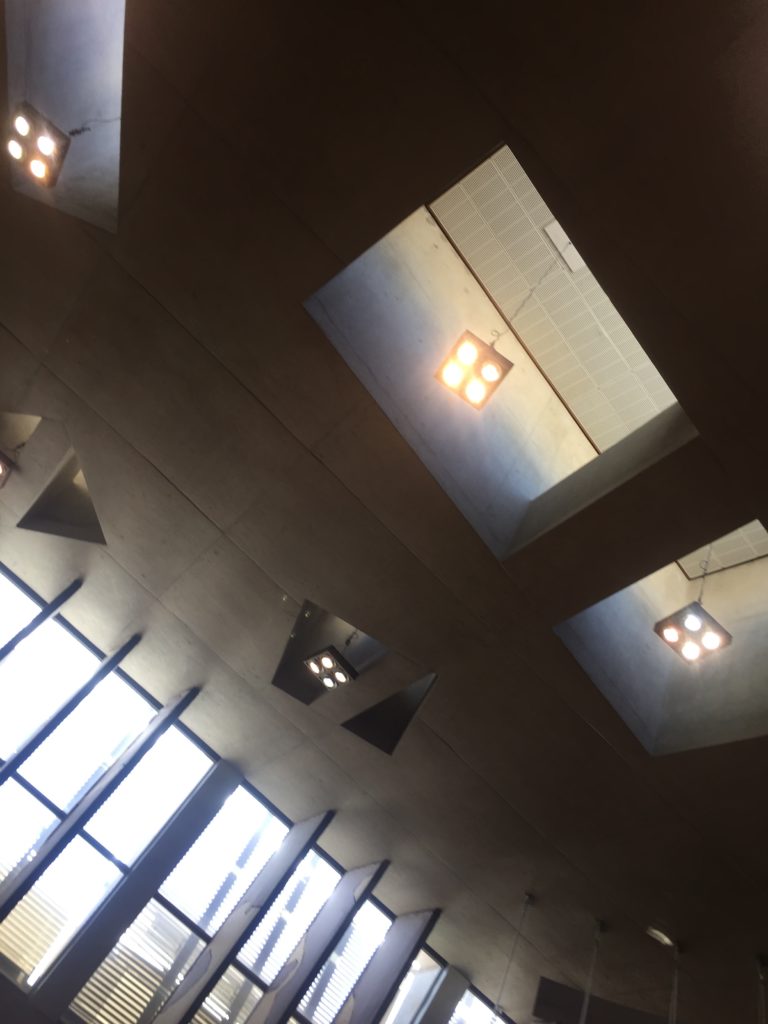
The ceiling in the court chamber 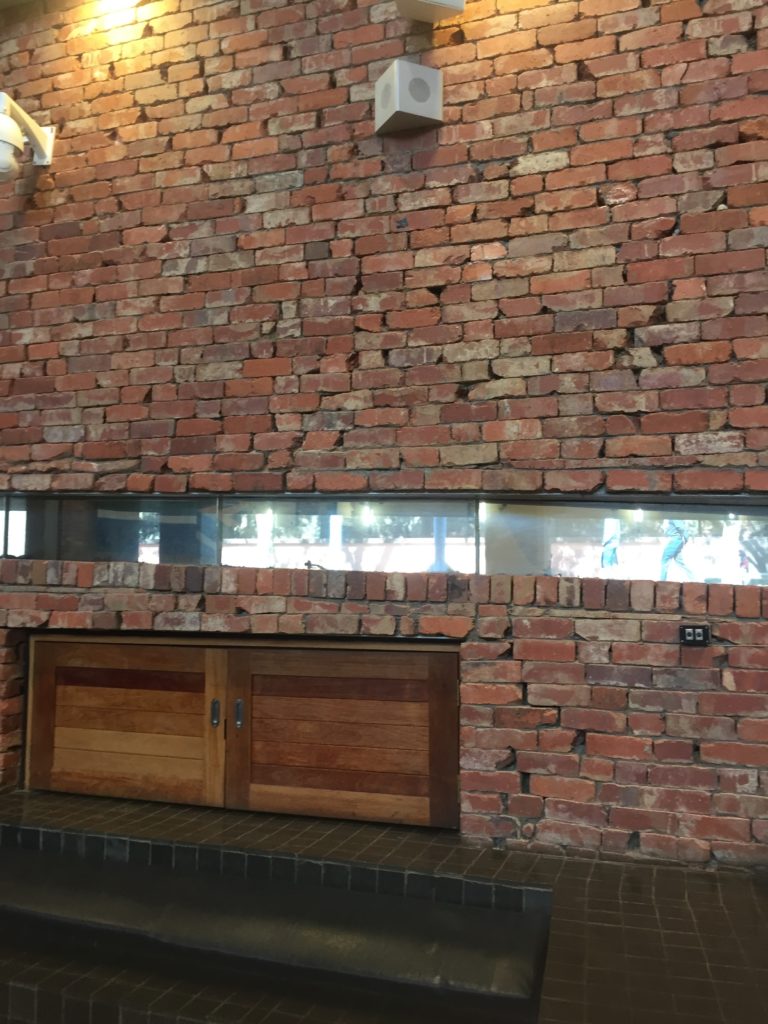
The bricks used for the building and view of the public’s feet. 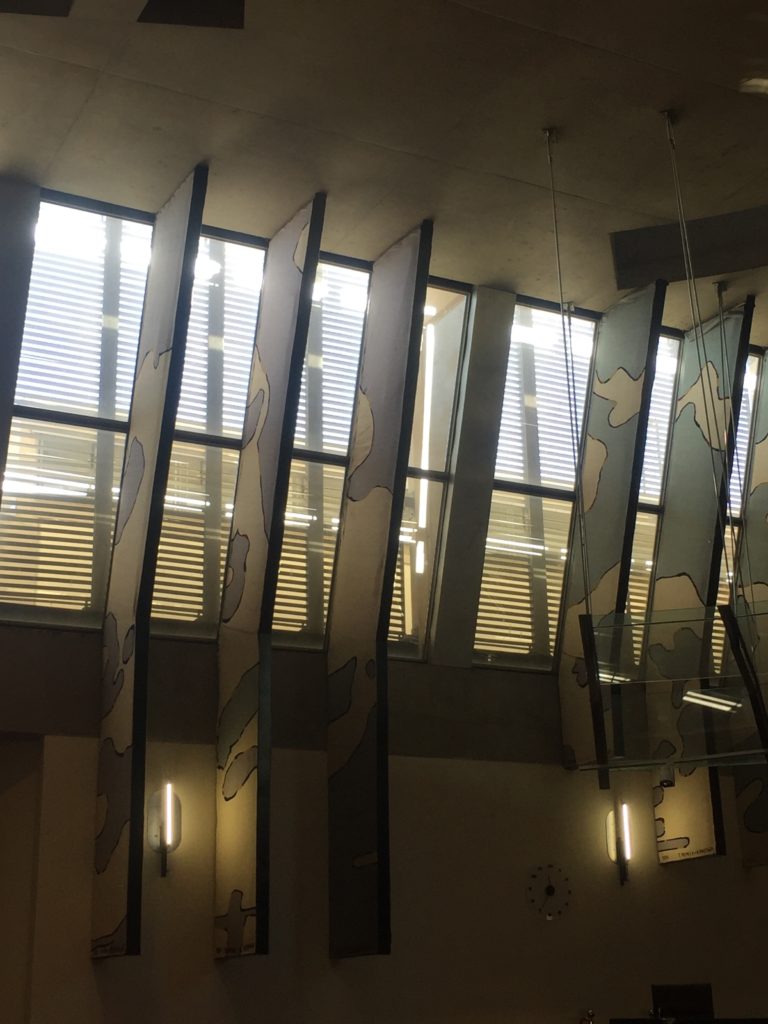
The windows and panels in the chamber 
A closer view of the cow skin and judges panel 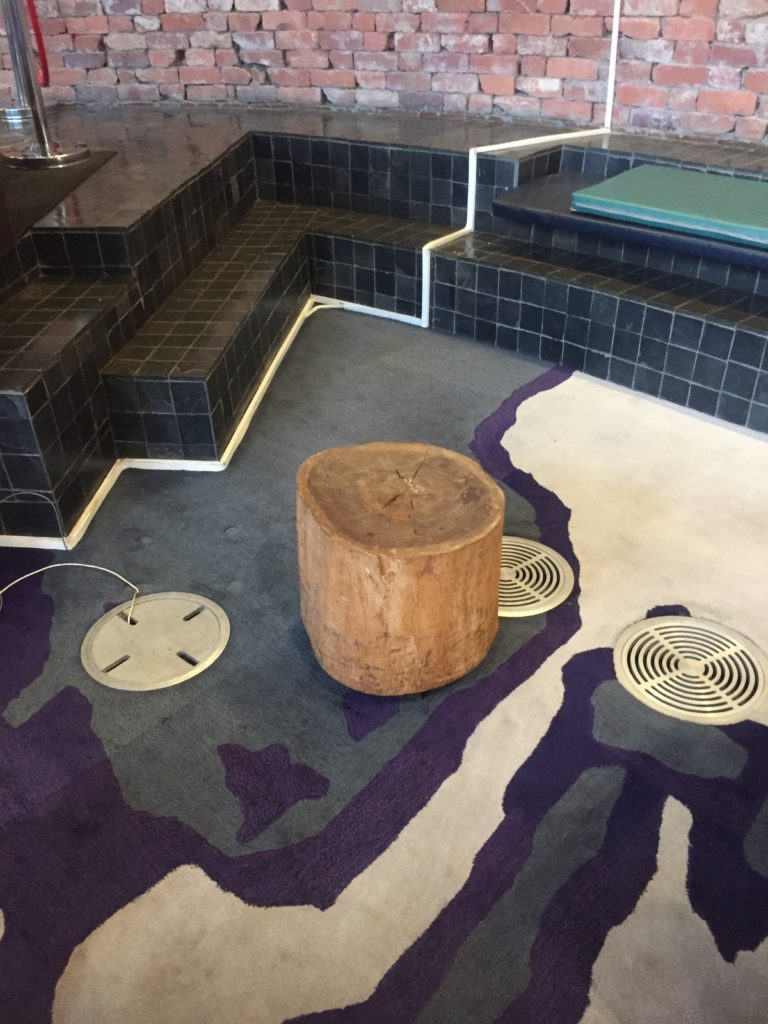
The tree stump seat for the public 
A picture showing the probity of the public seating to the judges panel. The edge judge seat is top left and the public seating ends on the green bench cover in the centre of the image.
The Constitutional Court also has a large gallery to the left of the Public Area. As seen in the photos below, the art installations all use very different mediums and show real diversity to depict the past and ensure that people do not forget. My favourite piece was Blue Dress by Judith Mason. The story behind the dress is that a woman called Ndwandwe was imprisoned, tortured and kept naked for 10 days by police in an attempt to find information before she was fatally shot. In order to keep her modesty, she made for herself underwear out of a thin blue plastic bag in her cell. Mason collected discarded blue plastics bags and sewed them into the iconic dress in order to tell the story. Ndwandwe became known for this act of defiance, her refusal to talk to her captures and tell them information, and became a symbol for hope. It demonstrates that small ordinary things, like a plastic bag, can add up and make a huge difference, especially when put with other small things.
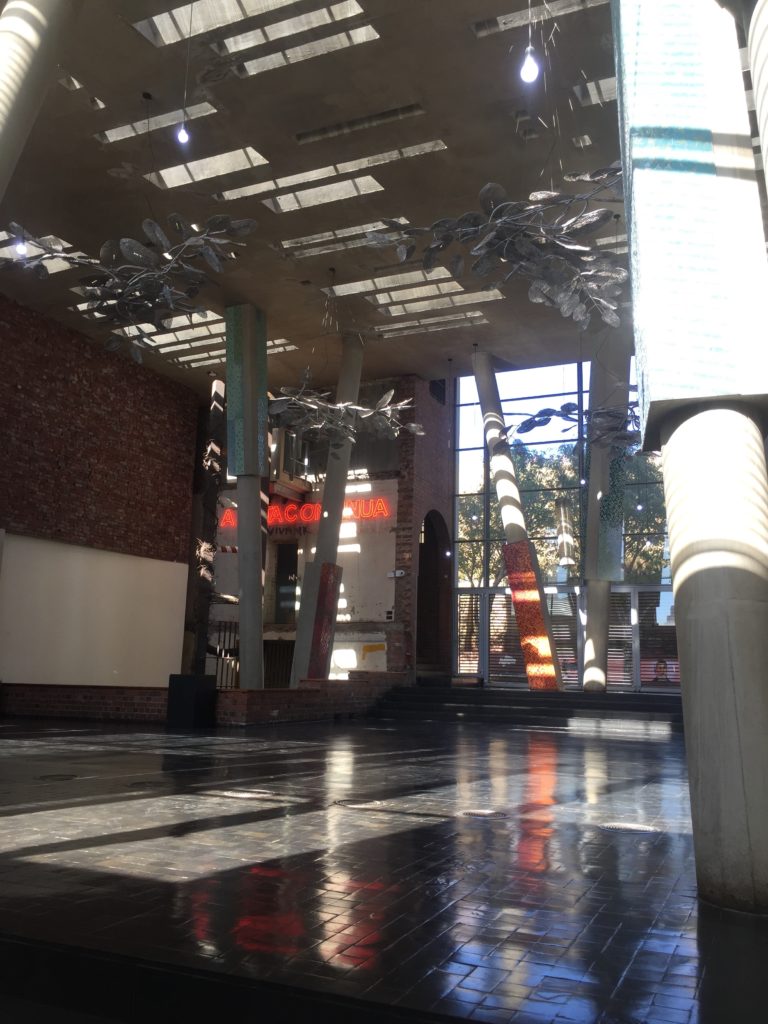
A view of the public Area from the opposite side. 
The picture gallery 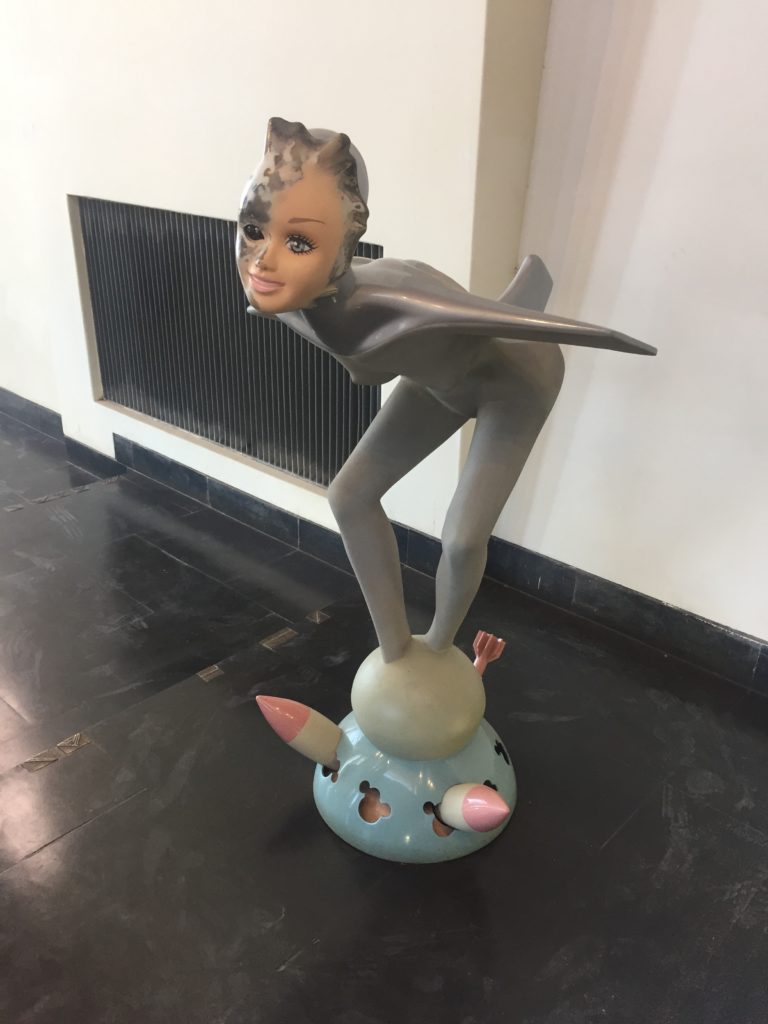
Fly by Night Girl by Stefan Blom (2015) 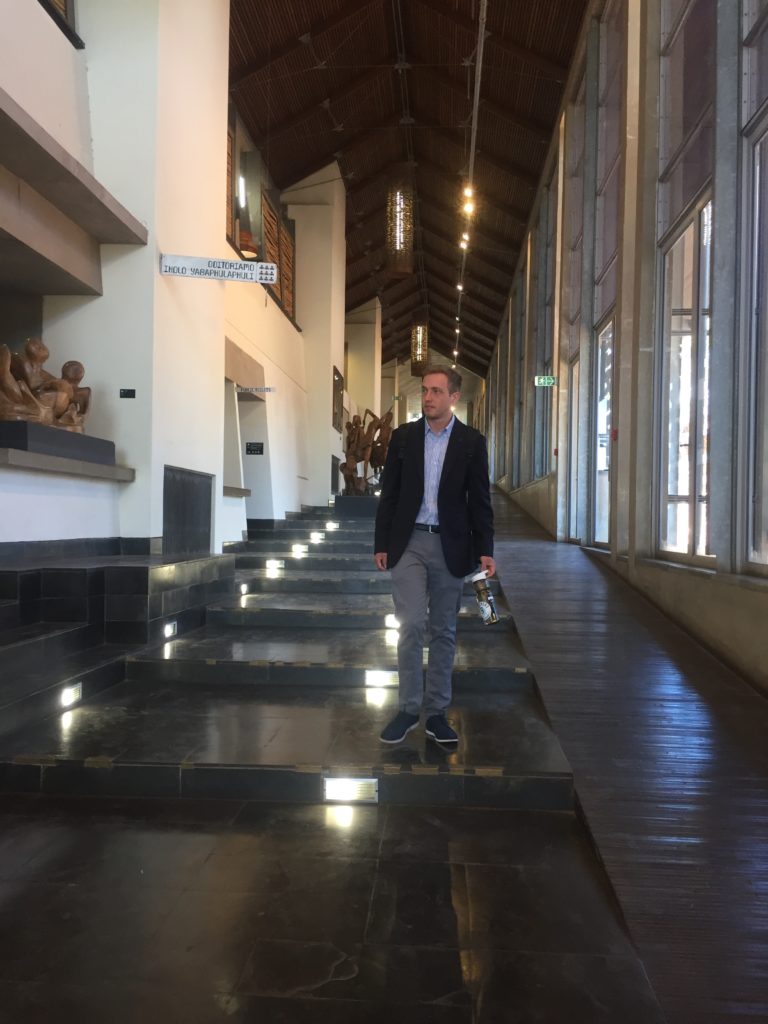
Kellen Silver walking down the gallery section 
The hanging installation shows the shape of each province in South Africa 
Blue Dress by Judith Mason (1998)
The small things in the court add up in a similar way; each individual aspect is small, but when together, the building is grand and thought provoking. Perhaps this is a message for our lives. Each day we do small things which may not always seem significant, but each small thing we do is a step towards something bigger. Some aspects of the court had no explanation or apparent significance, such as the carpet in the chamber and public seats. However, they were still important. The carpet provides a path for people to navigate the room, and the seats are needed to hold the public. I often forget about the things that hold me together so that I can achieve the small things that lead to the big things, such as my family, friends, my morning runs, my papaya snacks, and my comfortable Karrimor trainers. In life, on an individual level or on a country wide level, everyday things are significant in order to learn from the past and create a better future.
The Constitutional Court really made me think about significant things in my life, and also connect the court to our visit to the Apartheid Museum- I didn’t even think to reply to my mum’s WhatsApp message!
Lucy Wilkins

